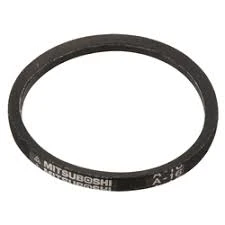- Arabic
- French
- Russian
- Spanish
- Portuguese
- Turkish
- Armenian
- English
- Albanian
- Amharic
- Azerbaijani
- Basque
- Belarusian
- Bengali
- Bosnian
- Bulgarian
- Catalan
- Cebuano
- Corsican
- Croatian
- Czech
- Danish
- Dutch
- Afrikaans
- Esperanto
- Estonian
- Finnish
- Frisian
- Galician
- Georgian
- German
- Greek
- Gujarati
- Haitian Creole
- hausa
- hawaiian
- Hebrew
- Hindi
- Miao
- Hungarian
- Icelandic
- igbo
- Indonesian
- irish
- Italian
- Japanese
- Javanese
- Kannada
- kazakh
- Khmer
- Rwandese
- Korean
- Kurdish
- Kyrgyz
- Lao
- Latin
- Latvian
- Lithuanian
- Luxembourgish
- Macedonian
- Malgashi
- Malay
- Malayalam
- Maltese
- Maori
- Marathi
- Mongolian
- Myanmar
- Nepali
- Norwegian
- Norwegian
- Occitan
- Pashto
- Persian
- Polish
- Punjabi
- Romanian
- Samoan
- Scottish Gaelic
- Serbian
- Sesotho
- Shona
- Sindhi
- Sinhala
- Slovak
- Slovenian
- Somali
- Sundanese
- Swahili
- Swedish
- Tagalog
- Tajik
- Tamil
- Tatar
- Telugu
- Thai
- Turkmen
- Ukrainian
- Urdu
- Uighur
- Uzbek
- Vietnamese
- Welsh
- Bantu
- Yiddish
- Yoruba
- Zulu
ആഗ . 05, 2024 02:56 Back to list
Exploring the Advantages of Flat Belts in Modern Agricultural Equipment and Machinery Applications
Flat Belts for Farm Machinery A Key Component in Agricultural Efficiency
In the ever-evolving world of agriculture, machinery plays a critical role in enhancing productivity and efficiency. Among the essential components that contribute to the seamless operation of various agricultural machines, flat belts stand out as a simple yet effective solution for power transmission. Flat belts have been a staple in farm machinery for many years, enabling farmers to accomplish tasks with greater ease and reliability.
The Basics of Flat Belts
Flat belts are made from materials such as rubber, fabric, or synthetic compounds and are designed to transmit power between pulleys. Unlike V-belts or toothed belts, flat belts are characterized by their smooth, flat surfaces, which allow them to achieve high-speed motion without the risk of slipping. This feature is particularly advantageous in agricultural settings where consistent and reliable performance is crucial. Farmers rely on these belts to power equipment ranging from grain elevators and threshers to milking machines and irrigation pumps.
Advantages of Flat Belts in Agriculture
1. Durability Farmers often work in tough environments, and agricultural machinery faces extreme conditions. Flat belts are built to withstand wear and tear, thanks to their robust materials and construction. They can resist environmental factors such as moisture, temperature fluctuations, and chemical exposure, ensuring a long lifespan and reducing the need for frequent replacements.
2. Versatility The versatility of flat belts is one of their most significant advantages. They can be used in various applications, making them suitable for a wide array of farm machinery. Whether it’s driving a combine harvester or powering a small pump, flat belts can be adapted to fit different systems, which eliminates the need for specialized components.
flat belts for farm machinery

3. Efficiency Flat belts can efficiently transmit power with minimal energy loss, which is vital in a field where margins are often tight. Their flat design allows for smooth operation, reducing friction and wear. This results in lower fuel consumption and operational costs, benefiting farmers and their bottom line.
4. Ease of Maintenance Regular maintenance is essential for ensuring the longevity of agricultural equipment. Flat belts are relatively easy to inspect and replace compared to more complex belt systems. This simplicity allows farmers to quickly address any issues, minimizing downtime and keeping operations running smoothly.
5. Cost-Effectiveness The economic aspect cannot be overlooked. Flat belts generally offer a more affordable solution compared to other belt types. When combined with their long lifespan and low maintenance needs, this makes them an attractive option for farmers looking to maximize their investment in machinery.
Conclusion
As agriculture continues to advance and machinery becomes more sophisticated, the role of components like flat belts remains vital. Their durability, versatility, efficiency, ease of maintenance, and cost-effectiveness make them a preferred choice for farmers globally. By ensuring reliable power transmission, flat belts contribute significantly to the effectiveness of agricultural operations.
In an industry where efficiency is paramount, choosing the right components for farm machinery can directly impact productivity and profitability. Flat belts represent a reliable, time-tested solution that caters to the needs of modern agriculture, making them an indispensable part of farming equipment. As technology progresses and the demands on agricultural machinery increase, flat belts will likely continue to play a crucial role in powering the future of farming.
-
Korean Auto Parts Timing Belt 24312-37500 For Hyundai/Kia
NewsMar.07,2025
-
7PK2300 90916-T2024 RIBBED BELT POLY V BELT PK BELT
NewsMar.07,2025
-
Chinese Auto Belt Factory 310-2M-22 For BMW/Mercedes-Benz
NewsMar.07,2025
-
Chinese Auto Belt Factory 310-2M-22 For BMW/Mercedes-Benz
NewsMar.07,2025
-
90916-02660 PK Belt 6PK1680 For Toyota
NewsMar.07,2025
-
drive belt serpentine belt
NewsMar.07,2025

